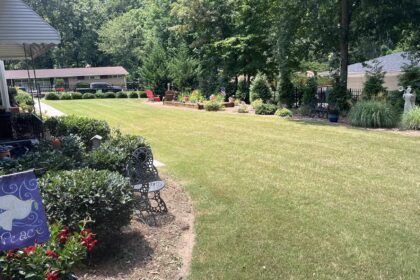Designing and constructing a custom shed is an exciting project that adds valuable storage, functionality, and charm to your property. However, before you order materials or start laying the foundation, there’s one crucial step you cannot afford to skip: understanding shed building permits and local placement regulations. Navigating these rules is essential to avoid costly mistakes, legal penalties, or even forced removal of your shed.
Whether your shed will serve as a garden tool haven, home office, workshop, or guest space, local zoning laws and permitting requirements can significantly impact your design choices. From setbacks to structure height to utility connections, several elements must comply with municipal or county ordinances. Let’s explore everything you need to know about permits, placement guidelines, and how to confidently move forward with your backyard shed project.

Why Shed Building Permits Matter
Homeowners often assume that small or non-permanent structures don’t require permits, but that’s a risky misconception. Shed building permits exist to ensure safety, protect property value, and maintain consistency in neighborhood planning. Permits help verify that your shed’s design and location meet zoning, fire, and building codes.
Without the proper approvals, you could face fines or be required to alter or dismantle your structure. In some areas, failing to secure a permit can also delay home appraisals or future resale. Taking the time to file the correct paperwork and understand local rules protects your investment and gives you peace of mind.
What Triggers the Need for a Permit?
Each jurisdiction has its own guidelines for when shed building permits are required. While many locations allow small, non-electrified sheds under a specific square footage without a permit, going over that limit or adding utilities typically requires one. Here are common factors that determine whether a permit is needed:
- Size: In many areas, structures under 100 or 120 square feet may not need a permit, but this varies.
- Height: Taller sheds or those with a loft may be subject to stricter rules.
- Utilities: Any electrical, plumbing, or HVAC installations usually require inspection and permits.
- Foundation type: Permanent foundations like concrete slabs often need approval.
- Zoning: Your property’s zoning may affect where and what type of shed you can build.
Always consult your local building department before starting. A short phone call or visit to their website can save you from major complications down the road.
Setback and Placement Regulations
Besides permits, placement of your shed must align with zoning rules known as “setbacks.” These regulations dictate how close a structure can be to property lines, fences, easements, or other buildings. Setbacks ensure fire safety, adequate access for maintenance, and preserve neighborhood aesthetics.
For instance, your jurisdiction may require the shed to be at least five feet from the side and rear property lines and ten feet from your home. Some areas have stricter placement rules for larger sheds or those near wetlands or utilities.
Improper placement can result in fines or required relocation of the shed—an expensive mistake. Always request a copy of your local site placement rules or use a site plan review service before construction.
HOA and Neighborhood Rules
In addition to government rules, you might also need approval from your homeowner’s association (HOA). HOAs can enforce specific design, placement, color, or size restrictions on backyard structures. Even if you comply with city codes, violating HOA bylaws can trigger fines or legal disputes.
Always check your HOA’s covenants, conditions, and restrictions (CC&Rs) before purchasing or building a shed. Getting written approval in advance helps prevent issues down the line.
Working With Professionals to Simplify the Process
Navigating shed building permits and placement regulations can be confusing, especially if you’re building your first structure or dealing with strict local codes. That’s why working with a professional shed builder can be a game-changer.
Reputable shed-building companies offer expert guidance and permit-ready custom shed plans, ensuring your design meets all necessary legal and safety requirements. They understand local laws, streamline the permitting process, and help optimize placement based on your property’s layout and needs.
Instead of second-guessing whether your shed complies with all rules, working with experts ensures your project moves forward smoothly and legally.
Tips for a Smooth Permitting and Placement Experience
Even though every locality is different, the following tips can help you navigate your shed building permits process with confidence:
- Start with research: Contact your local building office to ask about permit thresholds, zoning restrictions, and documentation requirements.
- Prepare a site plan: Include property lines, existing structures, easements, and proposed shed location. This helps officials assess compliance with setbacks.
- Submit a detailed shed design: Include dimensions, height, materials, foundation type, and any utility plans. Be honest and thorough.
- Expect inspections: If your shed includes electric or plumbing, expect a city inspector to check compliance.
- Keep copies of approvals: Maintain digital and printed copies of all permits and approvals for future reference or property sales.
Staying proactive and organized will save you time, money, and stress in the long run.
Permitting Costs and Timelines
Permit costs vary depending on your location and the scope of the project. Simple shed permits may cost as little as $50, while more complex projects involving utility work or large structures can cost several hundred dollars.
The timeline to obtain permits can range from a few days to several weeks depending on the volume of applications and local processing speed. Be sure to factor this into your shed-building schedule.
Applying early and submitting complete, accurate documents will help expedite the process.
Legal and Safety Benefits of Getting a Permit
While it might feel like a hassle upfront, securing shed building permits ensures that your structure is safe, compliant, and protected under local laws. If your shed is ever involved in a property dispute, insurance claim, or real estate transaction, having the proper documentation will simplify the process.
Permits also confirm that your build is up to code—meaning better protection from fire hazards, electrical risks, or structural collapse. It’s about more than just rules—it’s about protecting your home, family, and neighbors.
Build Smart, Build Legal
Adding a shed to your property should be an exciting and fulfilling upgrade—not a legal nightmare. By understanding the ins and outs of shed building permits, you ensure your shed is built to last, properly placed, and fully approved.
Whether you’re going DIY or hiring a professional, compliance with local regulations saves time, money, and stress. Partnering with trusted experts, Shed Builders helps homeowners confidently design and install legal, functional, and beautiful backyard sheds tailored to their needs.
Start your project the right way—by learning the rules, applying for permits, and planning smart placement. That’s the foundation of a successful backyard build.




